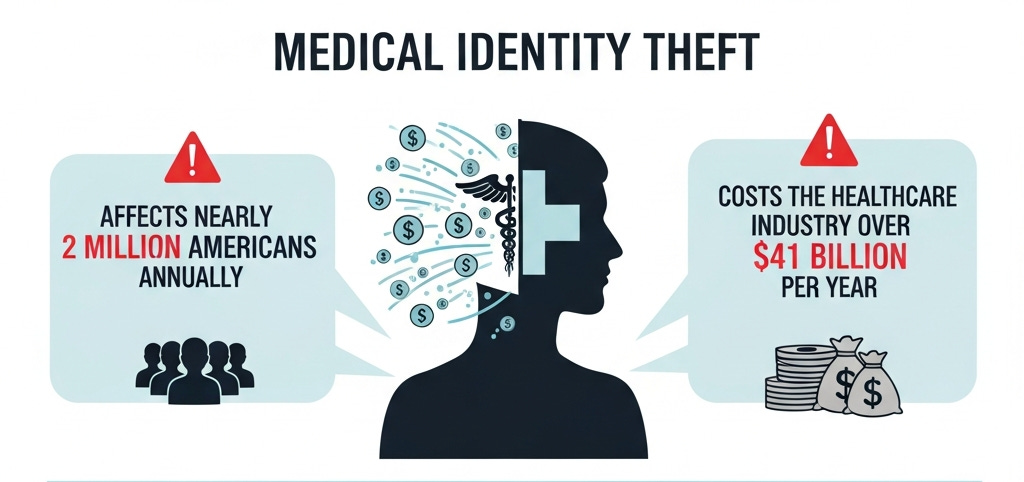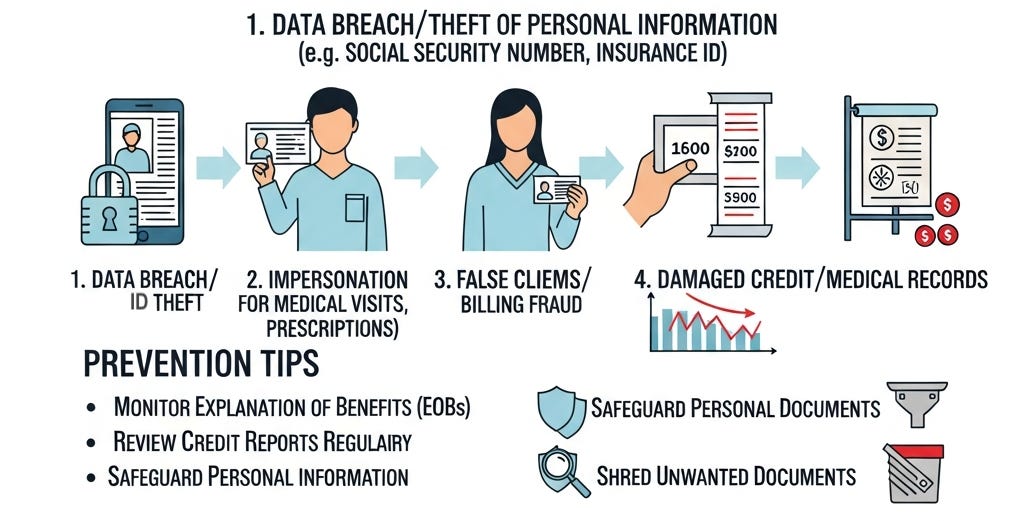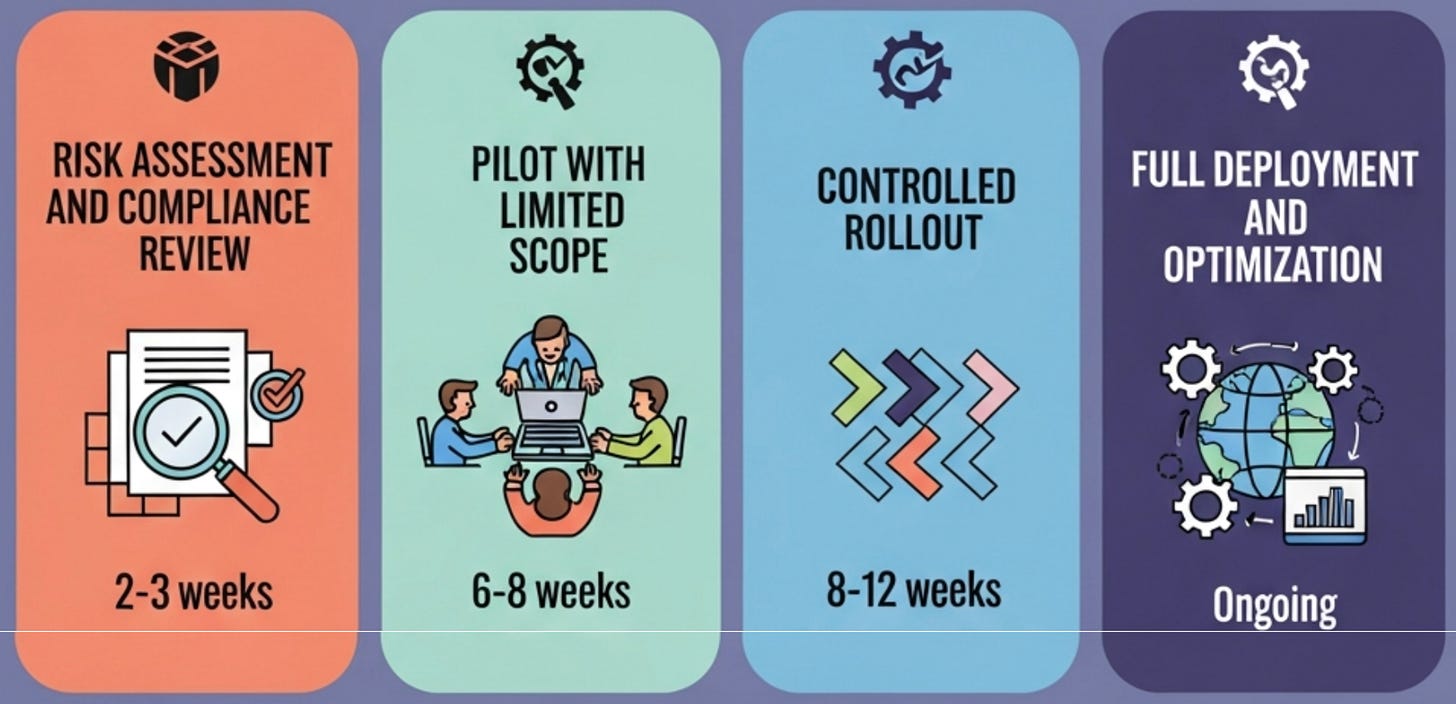NXaaS in Action: Virtual Healthcare Security
Protecting Patient Data with Network-Level Intelligence
Maria Rodriguez, 67, received an urgent text message at 2:13 PM on a Thursday: “Your prescription refill has been denied. Click here to update your insurance information immediately.” The message looked legitimate—it even included her doctor’s office name and the first few digits of her member ID.
She clicked the link and entered her credentials. Within hours, someone had accessed her healthcare portal, viewed her complete medical history, and attempted to use her insurance to fill prescriptions for opioids at three different pharmacies across the state.
Maria was a victim of medical identity theft—a crime that affects nearly 2 million Americans annually and costs the healthcare industry over $41 billion per year. But what made this attack successful wasn’t sophisticated hacking. The healthcare provider’s authentication system simply couldn’t tell that the person logging into Maria’s account wasn’t Maria, even though the attacker was using a completely different device from a different, unknown location.
This is the security gap that healthcare providers face every day. And it’s a gap that CAMARA APIs, delivered through NXaaS, are designed to close.
The Unique Security Challenges in Healthcare
Healthcare organizations face security challenges that are fundamentally different from other industries. Medical records contain some of the most personal information imaginable—diagnoses, treatments, prescriptions, mental health history, genetic data. Yet these records must be accessible to patients, multiple healthcare providers, insurance companies, pharmacies, and caregivers. Every access point is a potential vulnerability.
Medical identity theft is more lucrative than credit card fraud. A stolen medical identity can be used to obtain prescription drugs, file fraudulent insurance claims, and receive medical services—all of which are harder to detect and reverse than financial fraud.
Healthcare serves everyone—from tech-savvy millennials to elderly patients with limited digital literacy. Security solutions must work for all populations without creating barriers to care, while meeting strict HIPAA and state privacy requirements.
What Traditional Healthcare Authentication Misses
When a patient logs into a healthcare portal or mobile app, traditional security systems check passwords, security questions, device recognition, and SMS codes. But they can’t see whether the patient’s phone number was hijacked yesterday, if the SIM card is the same one they’ve been using, whether the device itself was recently swapped, or if the patient is actually at the location they claim.
These blind spots are exactly what fraudsters exploit to commit medical identity theft, prescription fraud, and healthcare benefits fraud.
CAMARA APIs: Network-Level Protection for Patient Data
CAMARA is a global open-source initiative that standardizes access to telecom network capabilities through APIs. For healthcare providers, this means being able to query the mobile network itself to verify whether a patient’s device and connection are genuine, active, and safe—before granting access to sensitive medical information.
Through NXaaS, healthcare organizations get access to these powerful security capabilities without the complexity of managing multiple carrier relationships or technical integrations.
Key CAMARA APIs for Healthcare
SIM Swap Detection detects when a phone number has been transferred to a different SIM card.
Number Verification confirms that the phone number provided matches the device being used.
Location Verification provides network-level confirmation of a patient’s location.
Device Swap Detection identifies when a phone number is now associated with a completely different physical device.
Real-World Use Cases:
State Medicaid Agency
A state Medicaid agency managing healthcare benefits for 2.3 million residents faced systematic fraud—compromised patient accounts were being used to file false claims, redirect benefits payments, and obtain prescription medications.
The NXaaS Solution:
The agency integrated CAMARA APIs through NXaaS to add invisible security layers. Every login triggers Number Verification to confirm the device legitimately belongs to the account holder—happening transparently with zero friction for legitimate users. Suspicious patterns (new device + new location + unusual hours) trigger automatic SIM Swap checks. High-value transactions like changing bank accounts require Location Verification. System-wide monitoring detects patterns indicating organized fraud operations.
Results After Six Months:
73% reduction in successful account takeover attempts
Zero additional friction for legitimate users
$4.2 million in prevented fraudulent claims annually
Improved patient satisfaction due to reduced false-positive security blocks
Hospital System: Securing Remote Workforce Access
A large hospital system with 8,000 employees needed to secure access to electronic health records for hybrid workers accessing systems from various locations, while meeting HIPAA requirements without deploying complex mobile device management.
The Implementation:
Multi-layered verification based on data sensitivity. General patient information requires Number Verification plus password and biometric. Detailed medical records add Location Verification and SIM Swap checks. Highly sensitive data includes Device Swap detection and continuous session monitoring with automatic termination if anomalies are detected.
Results:
Full HIPAA compliance achieved
Detected and prevented two unauthorized access attempts from compromised devices
Zero HIPAA violations related to mobile access in 18 months
Reduced authentication friction while strengthening security
Telehealth Platform: Preventing Prescription Fraud
A national telehealth platform faced fraudsters creating accounts with stolen identities and requesting controlled substance prescriptions. The NXaaS solution includes Number Verification at registration, Location Verification to confirm patients are in the provider’s licensed state, and automated risk scoring for prescription requests based on multiple CAMARA signals.
Results:
68% reduction in suspected fraudulent prescription requests
91% reduction in prescriptions later flagged as potentially fraudulent
Maintained high patient satisfaction—legitimate patients experience seamless service
Why NXaaS vs. Direct Carrier Integration
Healthcare providers might consider integrating CAMARA APIs directly with carriers, but this approach faces critical challenges. Healthcare fraud is happening now—organizations can’t wait 18-24 months for multi-carrier integration. Patients use dozens of different carriers, each requiring separate negotiations and technical integration. Healthcare systems often operate across multiple states with different dominant carriers. Healthcare IT teams are experts in EHR systems and HIPAA compliance—not telecom API integration.
NXaaS provides production-ready access in 3-6 months with a single integration point for all carriers, healthcare-focused support, and automatic handling of all updates and maintenance.
Implementation Timeline
Healthcare organizations typically follow a four-phase approach: Risk Assessment and Compliance Review (2-3 weeks), Pilot with Limited Scope (6-8 weeks), Controlled Rollout (8-12 weeks), and Full Deployment and Optimization (ongoing). Because NXaaS is designed for enterprise deployment, healthcare organizations can implement with confidence that patient care won’t be disrupted.
The Invisible Protection Patients Deserve
CAMARA APIs through NXaaS deliver security that’s protective, reliable, and focused on patient wellbeing without creating unnecessary burden. Legitimate patients accessing their medical records, refilling prescriptions, or attending telehealth appointments experience seamless, frictionless access. The security is invisible—working in the background to confirm their identity through network-level signals.
But when fraudsters attempt to use compromised credentials, stolen identities, or taken-over accounts, they encounter an impenetrable barrier. This is the security paradigm that healthcare deserves: protection without friction, security without complexity, trust without burden.
Conclusion
Medical identity theft, prescription fraud, and healthcare benefits fraud are accelerating as healthcare becomes increasingly digital. Traditional security approaches are necessary but no longer sufficient to protect patient data and prevent fraud.
With CAMARA and NXaaS, the mobile network’s sophisticated identity verification infrastructure is finally available to healthcare providers, telehealth platforms, and healthcare agencies that need it most.
Invisible to patients. Impenetrable to fraudsters. HIPAA compliant. Integrated in months, not years.




